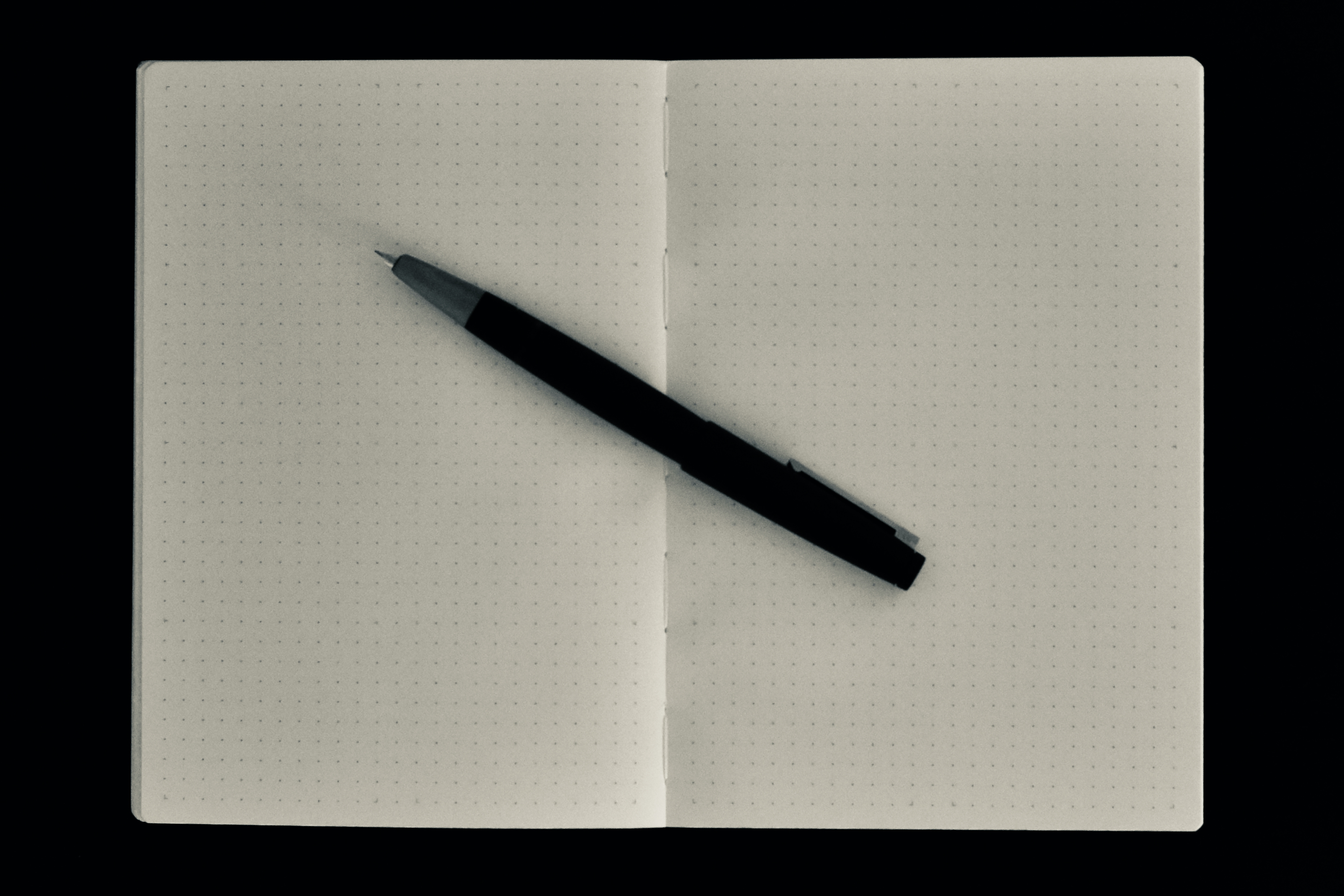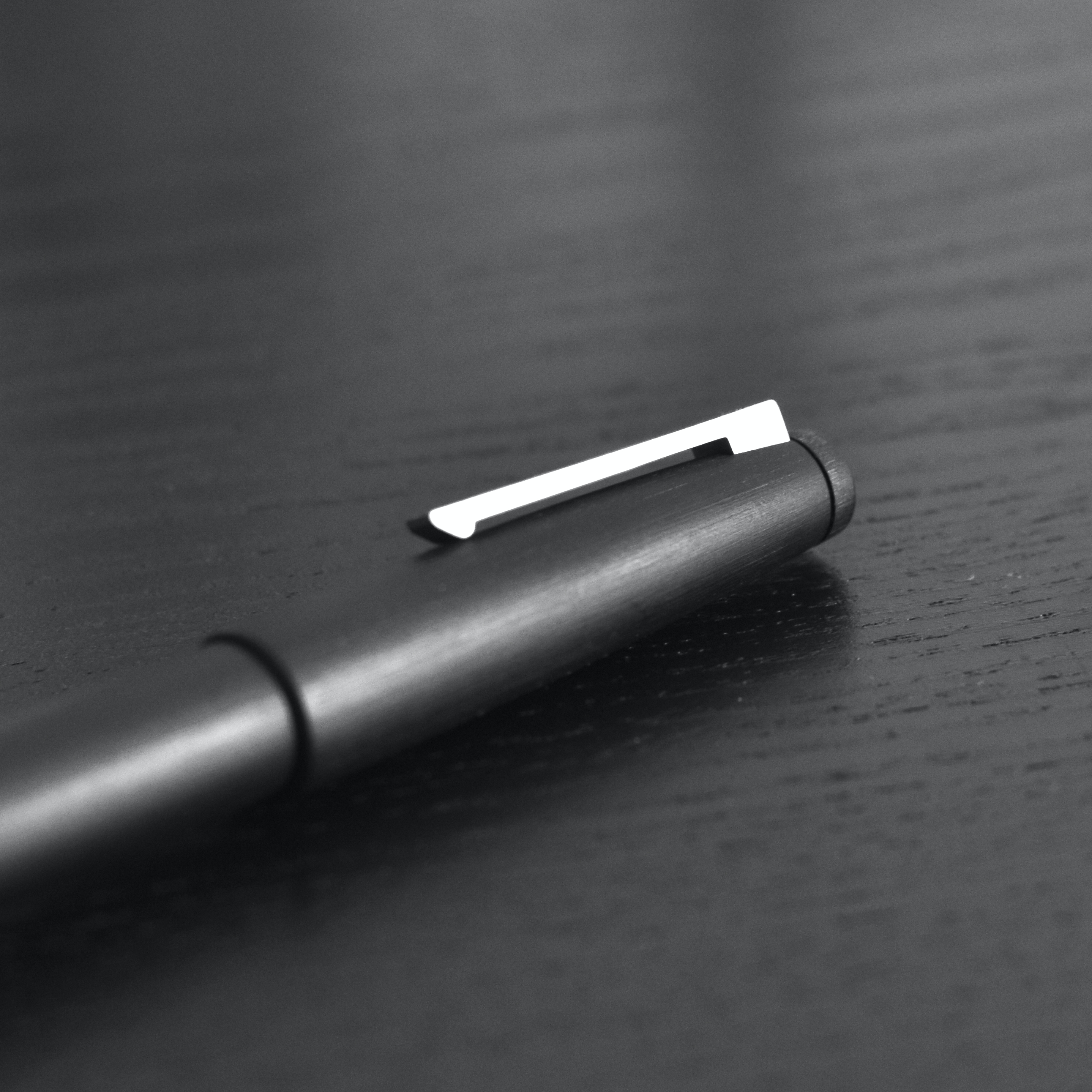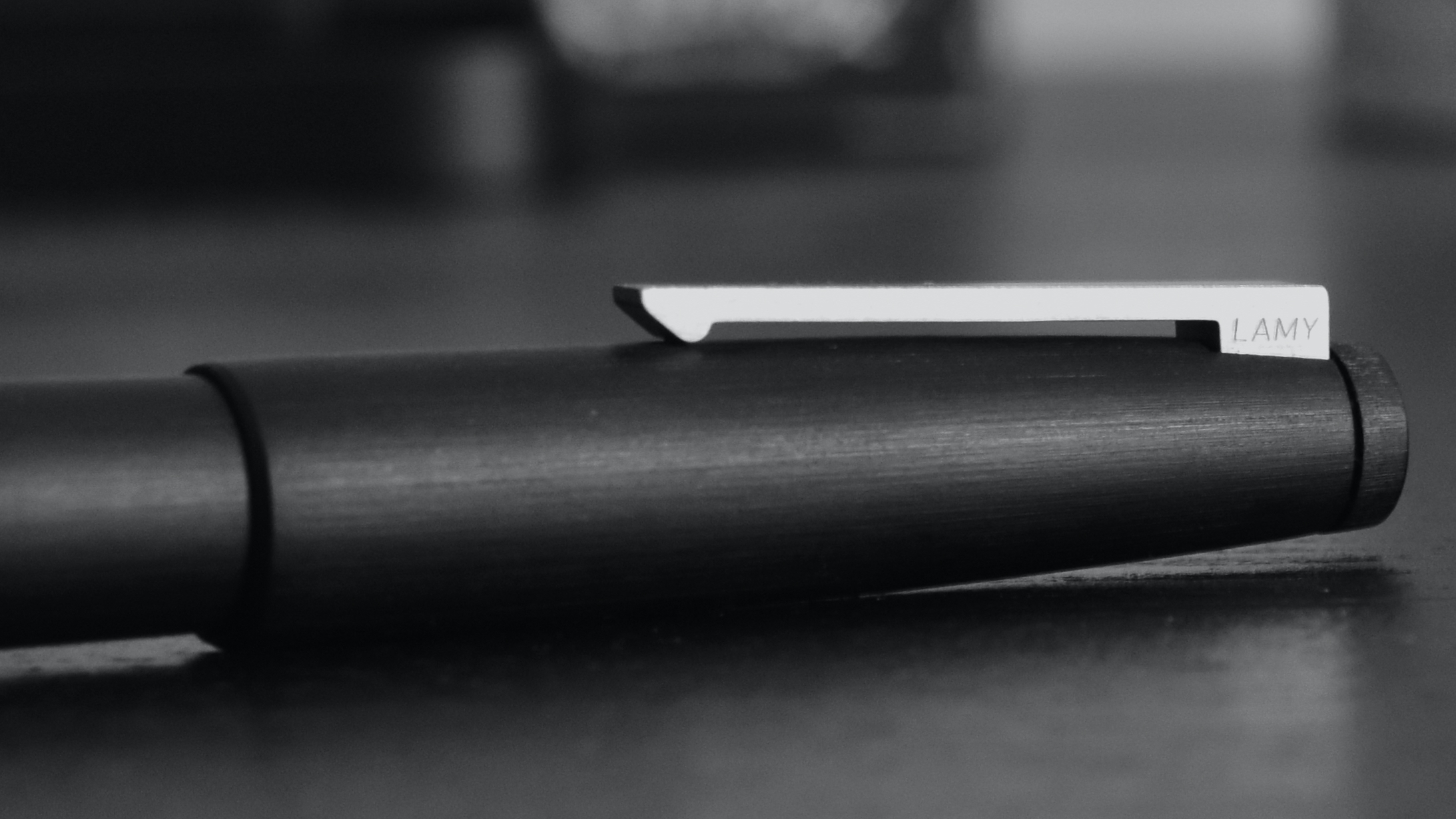Lamy 2000
April 12, 2020

Alongside most of the world I am working from home amidst the Covid-19 crisis. The UK will review its lockdown tomorrow, but it will be a long time before life returns to normal. The extra time afforded by my significantly shorter commute has given me the opportunity to cook, watch movies, and enjoy my fountain pen collection.1
I bought a Lamy 2000 after completing my undergraduate degree, but used it little through my master’s. It had long been my grail pen but I had no need to write Verilog by hand, so it remained largely unused.2 Prior to the 2000 I owned the Lamy Studio, Vista, and Safari. All of these are great pens and exploration inevitably lead me to the 2000.
My immediate reaction to the 2000 was that it looked so much cooler than all my other Lamy pens. The Studio certainly has a distinctive shape and clip whilst the Safari/Vista design is purely functional and almost authoritarian: the triangular grip dictates how you must hold the pen.
On the other hand, the 2000 is ingenious in its simplicity. Ignoring the cap, you’d be forgiven for thinking the pen is a single part. The joins separating the body from the grip and the body from the twist mechanism are deliberately obscured. Unlike most fountain pens, disassembly is rarely required as the pen can be refilled just by dipping it in ink and rotating the end cap. This unibody design predates the MacBook by forty years.

Although enamoured with the pen’s appearance, I didn’t initially enjoy writing with it as much as I expected. I initially had a faulty pen that leaked and ink didn’t flow well through the second nearly as well as some of my TWSBI or Pilot pens. However, over time I adjusted to the pen, and found I preferred the “fine” thickness to my other, thicker nibs. The rhodium-plated gold nib is also the smoothest nib I’ve ever used, and surprisingly forgiving on poor quality paper. Today I have no complaints whatsoever about the functionality of the pen, and I’ve never had difficulties caring for or cleaning it.
Expensive fountain pens tend to be heavier than their cheaper counterparts, especially north of $200. In part this is due to the use of metal parts over plastic, but I suspect it mostly plays into the psychology of heavier objects feeling more substantial and therefore more valuable. The 2000 eschews this, and is instead finished in Makrolon (polycarbonate) so that it weighs in at just 25g, little more than the 17g Lamy Safari, even though it costs an order of magnitude more. I’d argue that this gives the 2000 a significant advantage over other pens in its price category: I can hold it and write with it for much longer than a Pilot Vanishing Point, for example.
Like the Lamy Studio — but unlike the Safari — the 2000 gives you flexibility in the way you hold it. The grip isn’t entirely symmetrical: it cuts off to form a straight edge with the nib. When viewed from below the symmetry returns: the outline of the nib mirrors flat area around the breather hole.

The 2000 features a narrow window near the section to indicate remaining ink. Windows are a common feature of Lamy pens, but unlike the Safari the slits only give you a vague sense of how much you’ve got left. Although windows are certainly useful, I don’t particularly like it as it edges away from the design’s uniformity. The window doesn’t feature on the “metal” finish of the pen, but inevitably I own the pen in black. The pen is light enough that the filled and unfilled weights are noticeably different.
A disadvantage of the uniformity is that the pen loses modularity: there is no choice over nib or ink refill mechanism. This is not entirely a bad thing: I’m a great lover of bold designs that are unafraid to make choices for you.3 In any case, I can’t imagine there are many people installing a $200 gold nib in a $20 Safari.

The 2000 is by far my favourite pen. I’m certainly not alone in my love for this pen and my affection is perhaps even clichéd. However, I believe represents the best of what fountain pens can be: comfortable to write with, easy to hold, and a hell of a great design. It is to this pen I point when I need to justify my view that fountain pens are the best writing instruments we have. In times such as these, we should celebrate that which represents the very best of what we can be, if only to bring a little more cheer into the world.
My most recent experiment was fresh pasta: using only a rolling pin to roll and fold the pasta probably burned more calories than I actually consumed.↩︎
I didn’t enjoy typing the Verilog too much either, but I was at least happy with the final processor that I designed for my thesis.↩︎
I have a fantasy of a “zero-decision” restaurant: you would walk in, be seated and served a single starter, then main, and finally dessert. Each course would be partnered by a single appropriate wine. Perhaps finish with coffee. Then leave, paying a bill that includes the tip and taxes, rounded to a suitable pleasing amount. No choice whatsoever: the only decision you can make is to walk through the door. My libertarian side does not advocate that all restaurants should be like this, but I’d love to experience one.↩︎